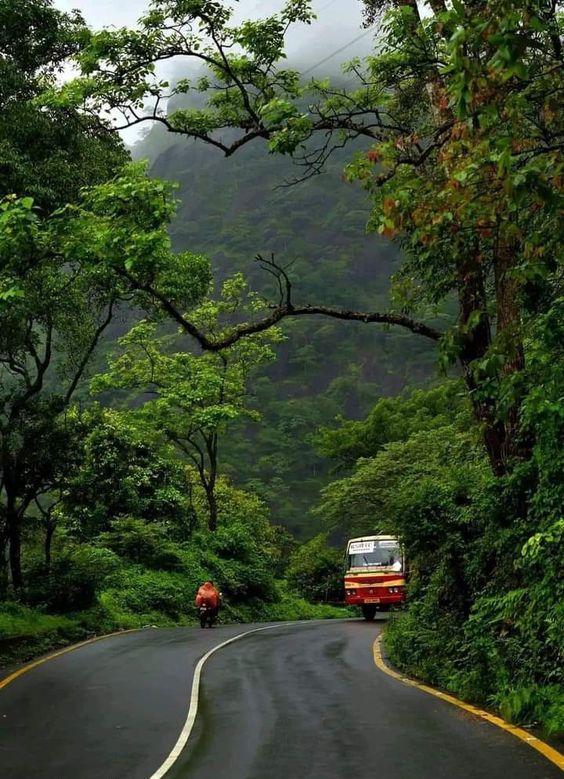



Table of Contents
- Key Highlights
- Objectives and Scope of PMGSY
- Funding and Implementation Mechanism
- Online Management, Monitoring, and Accounting System (OMMAS) for PMGSY
- Impact and Benefits of PMGSY
- Complementary State Schemes
- Challenges in Implementation
- Strategies for Overcoming Challenges
- Success Stories
- Conclusion
- Faq's
The Pradhan Mantri Gram Sadak Yojana (PMGSY) is a transformative initiative launched by the Government of India in December 2000, aimed at providing all-weather road connectivity to unconnected villages across the country. Recognizing the critical importance of infrastructure in rural development, this scheme seeks to enhance the quality of life for millions of Indians living in remote areas by improving access to essential services, markets, and opportunities.
Official Website of Pradhan Mantri Gram Sadak Yojana - https://omms.nic.in/

Key Highlights
Highlight | Description |
Objective | To provide all-weather road connectivity to unconnected villages with a population of 500 or more (250 or more in hilly or tribal areas) by 2019 |
Funding | Initially fully funded by central government, now 60% central and 40% state funding |
Implementation | Online Management, Monitoring and Accounting System (OMMAS) used for real-time tracking of projects |
Progress | As of December 2017, 82% of the targeted 178,000 habitations had been connected |
Benefits | Improved connectivity, economic growth, social development, lifestyle changes, environmental initiatives |
Complementary State Schemes | Mukhya Mantri Gram Sadak Yojana in states like Bihar, Chhattisgarh, Gujarat, Haryana, Madhya Pradesh, and Maharashtra |
Challenges | Maintenance of roads, quality assurance, funding constraints, land acquisition issues, coordination among stakeholders |
Strategies | Performance-based maintenance contracts, quality assurance guidelines, enhanced funding mechanisms, streamlined land acquisition processes, capacity building for local bodies |
Success Stories | Transformation of remote villages, economic development in tribal areas, enhanced access to education and healthcare |
Objectives and Scope of PMGSY

The primary objectives of the PMGSY are multifaceted and focus on ensuring that rural areas are not left behind in the nation's development journey. The key objectives include:
Connectivity to Unconnected Villages: The primary goal of PMGSY is to connect all villages with a population of 500 or more (and 250 or more in the case of hilly or tribal areas) with all-weather roads. This connectivity is essential for the socio-economic development of these regions.
Enhancing Rural Infrastructure: By improving road infrastructure, the scheme aims to facilitate better access to markets, schools, healthcare facilities, and other essential services, thereby promoting overall rural development.
Economic Growth and Employment Generation: Improved connectivity is expected to stimulate economic activities in rural areas, leading to job creation and increased income levels for rural households.
Social Integration: By connecting remote villages, the PMGSY aims to promote social integration and cohesion, allowing rural communities to participate more fully in the socio-economic mainstream.
Sustainability: The scheme also emphasises the importance of sustainable practices in road construction and maintenance, ensuring that the benefits of improved connectivity are long-lasting.
Funding and Implementation Mechanism
PMGSY is a Centrally Sponsored Scheme, which means that it is funded by both the central and state governments. Initially, the scheme was fully funded by the central government, but in 2015, the funding structure was revised. Now, the central government contributes 60% of the project cost, while the state governments are responsible for the remaining 40%. This collaborative funding model encourages states to take ownership of the projects and ensures that resources are allocated effectively.
Online Management, Monitoring, and Accounting System (OMMAS) for PMGSY
To streamline the implementation and monitoring of PMGSY, the government developed an Online Management, Monitoring, and Accounting System (OMMAS). This comprehensive system allows for real-time tracking of project progress, financial management, and quality control.
Key features of OMMAS include:
Project Proposal Submission: States can submit project proposals online, which are then evaluated and approved by the central government.
Financial Tracking: OMMAS enables real-time tracking of fund disbursement and utilization, ensuring transparency and accountability.
Quality Monitoring: The system incorporates quality assurance mechanisms to ensure that the constructed roads meet the required standards.
Data Management: OMMAS serves as a central repository for data related to road construction, facilitating better planning and decision-making.
Impact and Benefits of PMGSY

The PMGSY has had a profound impact on rural communities across India, contributing to their socio-economic development in various ways. Some of the key benefits of the scheme include:
1. Improved Connectivity
One of the most significant outcomes of PMGSY is the enhanced connectivity of remote villages. The construction of all-weather roads has drastically reduced travel time and improved access to essential services. Villagers can now reach markets, schools, and healthcare facilities more easily, leading to improved living standards.
2. Economic Growth
Better road infrastructure has facilitated the movement of goods and people, stimulating economic activities in rural areas. Farmers can transport their produce to markets more efficiently, leading to increased income. Additionally, improved connectivity has attracted investments in rural industries, creating job opportunities and boosting local economies.
3. Social Development
The PMGSY has played a crucial role in improving access to education and healthcare in rural areas. With better roads, children can attend schools regularly, and families can access healthcare services more easily. This has led to improved literacy rates and better health outcomes in rural communities.
4. Lifestyle Changes
The scheme has started to change the lifestyle of many villagers. Improved connectivity has led to the establishment of new businesses, markets, and service centers in previously isolated areas. This has not only created job opportunities but has also enhanced the overall quality of life for rural residents.
5. Environmental Initiatives
PMGSY has also made efforts to incorporate environmental considerations into its framework. The scheme encourages the planting of tree saplings along the roadsides, contributing to increased green cover and promoting biodiversity. This initiative not only enhances the aesthetic appeal of the roads but also helps combat climate change.
Complementary State Schemes
To further strengthen rural connectivity, several state governments have launched complementary schemes that work in tandem with PMGSY. These state-level initiatives aim to address local needs and fill gaps in infrastructure development. Some notable examples include:
Mukhya Mantri Gram Sadak Yojana: Launched in states like Bihar, Chhattisgarh, Gujarat, Haryana, Madhya Pradesh, and Maharashtra, this scheme focuses on enhancing rural road connectivity at the state level.
State-Specific Initiatives: Many states have developed their own road construction and maintenance programs to complement PMGSY, ensuring that rural areas receive the attention and resources they need.
These complementary schemes help to create a more integrated approach to rural development, ensuring that the benefits of improved connectivity are maximized.
Challenges in Implementation
Despite the significant progress made under PMGSY, several challenges remain that need to be addressed to ensure the long-term success of the scheme. Some of the key challenges include:
1. Maintenance of Roads
One of the critical issues facing PMGSY is the long-term maintenance of the constructed roads. While new roads are built, ensuring their upkeep is essential for sustainability. The lack of proper maintenance can lead to deterioration, rendering the roads unusable and negating the benefits of the initial investment.
2. Quality Assurance
Maintaining high standards of quality in road construction is crucial for the scheme's success. Poor-quality roads can lead to safety hazards and increased repair costs. Ensuring that construction adheres to established guidelines and standards is vital.
3. Funding Constraints
With rising construction and maintenance costs, securing adequate funding for PMGSY remains a challenge. While the central and state governments share the financial burden, fluctuations in budget allocations can impact project implementation.
4. Land Acquisition Issues
In many cases, land acquisition for road construction can pose significant challenges. Delays in acquiring land can lead to project delays and increased costs. Addressing land acquisition issues through effective policies and community engagement is essential for timely project completion.
5. Coordination Among Stakeholders
Effective coordination among various stakeholders, including central and state governments, local bodies, and communities, is crucial for the successful implementation of PMGSY. Ensuring that all parties are aligned and working towards common goals can enhance the effectiveness of the scheme.
Strategies for Overcoming Challenges
To address the challenges facing PMGSY and ensure its continued success, the government has implemented several strategies:
1. Performance-Based Maintenance Contracts (PBMC)
To ensure proper upkeep of rural roads, the government has introduced performance-based maintenance contracts. These contracts incentivize contractors to maintain the roads in good condition for a specified period, ensuring accountability and quality.
2. Quality Assurance Guidelines
The government has developed comprehensive guidelines for quality assurance in road construction. These guidelines outline the standards and procedures that must be followed to ensure that roads are built to last.
3. Enhanced Funding Mechanisms
To address funding constraints, the government is exploring innovative funding mechanisms, including public-private partnerships (PPPs) and leveraging financial institutions. These approaches can help secure additional resources for road construction and maintenance.
4. Streamlined Land Acquisition Processes
Efforts are being made to streamline land acquisition processes and engage local communities in discussions about road construction. This approach can help mitigate conflicts and expedite project implementation.
5. Capacity Building for Local Bodies
Strengthening the capacity of Panchayati Raj Institutions (PRIs) and local bodies is essential for effective project management and implementation. Providing training and resources to these institutions can enhance their ability to oversee road construction and maintenance.
Success Stories
The PMGSY has led to numerous success stories across India, showcasing the positive impact of improved connectivity on rural communities. Here are a few notable examples:
1. Transformation of Remote Villages
In states like Himachal Pradesh and Uttarakhand, the construction of all-weather roads has transformed remote villages, providing residents with access to markets, education, and healthcare. Villagers who once struggled to transport their goods can now reach markets more easily, leading to increased income and improved livelihoods.
2. Economic Development in Tribal Areas
In tribal regions of Madhya Pradesh and Odisha, PMGSY has played a crucial role in promoting economic development. Improved road connectivity has facilitated the movement of goods and services, enabling tribal communities to engage in trade and entrepreneurship.
3. Enhanced Access to Education
In many rural areas, the construction of roads has significantly improved access to education. Children who previously faced challenges in reaching schools can now attend classes regularly, leading to higher enrollment and retention rates.
4. Health Outcomes
The availability of all-weather roads has also improved access to healthcare facilities. Villagers can now reach hospitals and clinics more easily, leading to better health outcomes and reduced mortality rates.
Conclusion
The Pradhan Mantri Gram Sadak Yojana has been a game-changer in the field of rural infrastructure development in India. By providing all-weather road connectivity to unconnected villages, the scheme has opened up new avenues for economic growth, social development, and improved quality of life for millions of rural residents.
As the scheme continues to evolve, it is essential to address the challenges of maintenance, quality assurance, and funding to ensure the long-term sustainability of the roads. The government's commitment to enhancing rural infrastructure, coupled with the active participation of local communities and stakeholders, will play a crucial role in the success of PMGSY.
In conclusion, PMGSY is not just about building roads; it is about connecting people, enhancing livelihoods, and fostering inclusive growth in rural India. With continued efforts and strategic interventions, the scheme has the potential to transform the rural landscape, bridging the urban-rural divide and contributing to the overall development of the nation
explore further
Latest from Editorials
More from Publications
Resources
Dwello, for every home buyer, is a way to go from 'I feel' to 'I know', at no extra cost.




